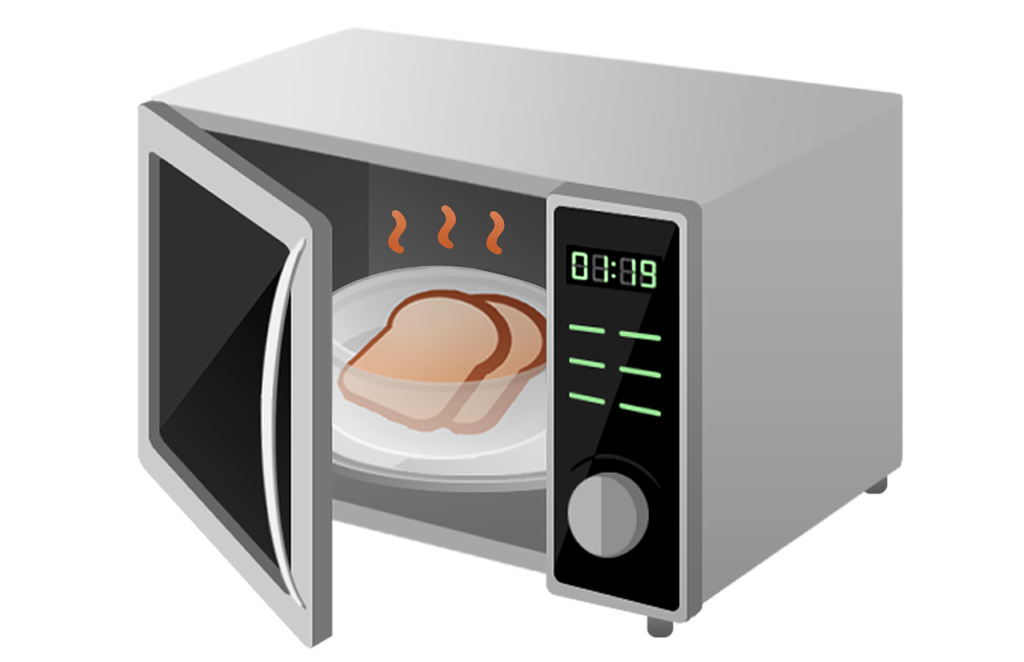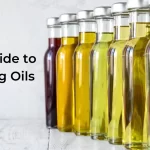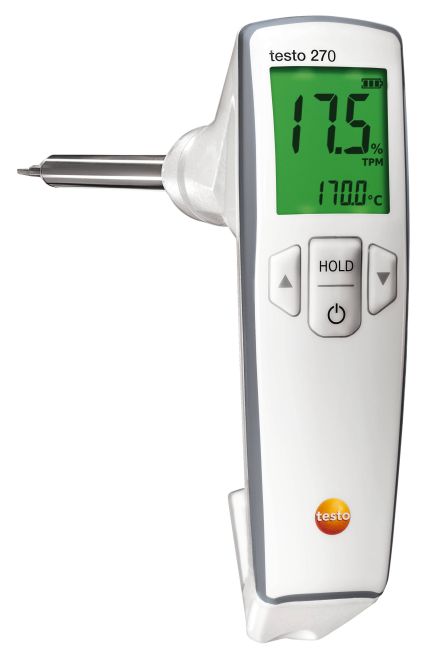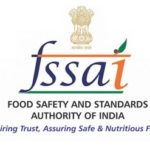To ease day-to-day bustle at cooking zones, microwave ovens are very much in use for meal preparation these days. Microwave cooking is also an energy efficient technique as against conventional oven cooking.
How do microwave ovens work?
Microwaves are high frequency radio waves that are part of the electromagnetic spectrum. They get reflected, transmitted or absorbed by materials in their path, in a similar manner as light. Microwaves are totally reflected by metallic materials while non-metallic materials such as glass & some plastics are mostly transparent to microwaves. It can be absorbed by food & water.
Being a helping assistant in our daily cooking activities, we may be familiar with how a microwave oven is structured. Starting with magnetron, other elements that make an oven complete are waveguide, stirrer, turntable, cooking cavity, door & choke and finally, power supply and control.
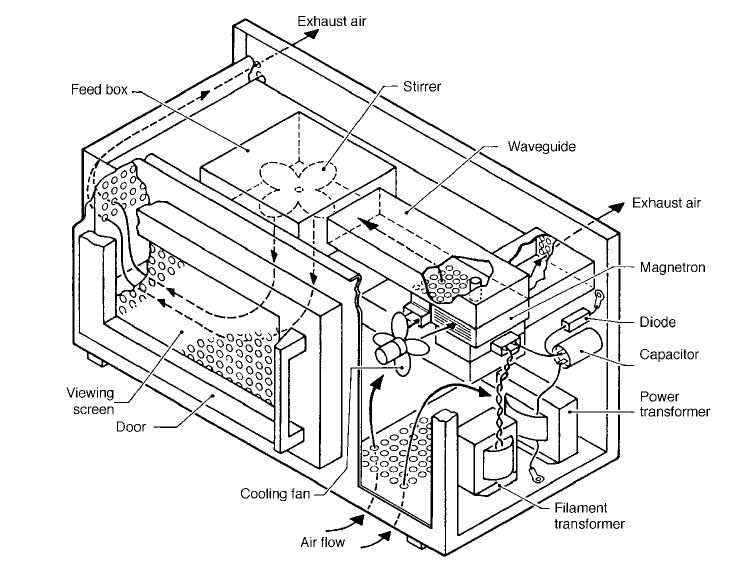
(From Buffler (1993).)
Once the oven is switched on, microwaves produced by magnetron are dispersed in the oven cavity and reflected by a stirrer fan so the microwaves get propagated in all directions. They are reflected by metal sides of the oven cavity and get absorbed by food. The rotating turntable will assist uniform heating of food.
The alternating electromagnetic field generated inside the microwave oven would lead to excitation, rotation/collision of polar molecules and ions inside food. Two major mechanisms namely, dipolar and ionic interactions cause heat generation and will subsequently lead to temperature rise in food.
What are the factors that influence heating up of food?
Water molecules in food, which is a ‘dipole’ will rotate according to the alternating electromagnetic field. Rotation of water molecules or dipolar interaction as said before, generates heat for cooking.
In addition to these dipole interactions, ionic compounds (i.e. dissolved salts) in food can also be accelerated by the electromagnetic field and would collide with other molecules to produce heat. Hence, food with higher moisture content will be heated up faster and as the concentration of ions increases, the rate of heating would also increase.
Even though oil molecules are less polar than water molecules and are non-ionic, food products with high oil content also have a fast heating rate because the specific heat of oil is about less than half that of water. On the other hand, food with high fat content can be heated at a temperature greater than 200 ℃ whereas food with high moisture content can be heated only up to 100 ℃ unless all water has evaporated, the reason being that water has a lower boiling temperature. So, time and temperature of the heating process depend on factors like, quantity, size, composition, shape, density and physical state of the food item.
The depth of penetration of microwaves in food decreases when degree of absorbance increases. Foods with higher moisture or salt content will have greater heating at the surface as it tends to absorb more microwaves and limit the penetration of microwaves. In a frozen food, heating would be greater at the defrosted portion as water has higher microwave absorbency than ice.
Any risks associated with microwave cooking?
Chemical Risks
Although there have been concerns that microwave cooking may increase production of carcinogens or mutagens in food, there is no scientific evidence that proves the same. Among the carcinogens, formation of the chemicals, heterocyclic amines (HCAs), polyaromatic hydrocarbons (PAHs) and nitrosamines are of particular concern.
According to studies, negligible amounts of HCAs are formed when meats are cooked at or below 100 ℃ and with shorter cooking time. However, lesser amounts of HCAs have been observed in meat and poultry items when cooked in a microwave oven as compared to other cooking methods, as per research reports.
Similarly, charred food of almost any composition contains PAHs while only a very low level of PAHs was found in food cooked by methods like steaming and microwave cooking. Also, a study found that microwave cooked bacon samples have significantly lower levels of nitrosamines than fried samples. Another study revealed that dried seafood products that were microwave cooked caused less increase in NDMA (classified as probable carcinogen by IARC), as compared with direct heating such as on gas range.
To conclude, microwave cooking does not produce significant amounts of HCAs, PAHs and nitrosamines. However, there are concerns regarding generation of other chemicals due to microwave cooking, but this has not been scientifically established.
Microbiological Risks
According to research studies, the effectiveness of microwave cooking in killing microorganisms and spores is comparable to conventional methods provided appropriate time and temperature are reached. The same time-temperature relationship applies to both the methods, for example, raw animal food must be heated to a temperature of at least 75 ℃ for 15 seconds to kill any food pathogens present in food.
But, microwave energy does not penetrate well in thicker pieces of food and may cause uneven cooking which may pose a health risk; food may not be sufficiently heated to kill potentially dangerous microorganisms. As per a report published by the WHO, food heated in a microwave oven should rest for several minutes after cooking is completed in order to allow the heat to distribute evenly throughout the food.
Nutrient Loss
Food cooked in a microwave oven is safe and has the same nutrient value as food cooked in a conventional oven. Studies have shown that there are no significant changes in proteins, lipids, vitamins and minerals as compared to conventional cooking methods.
Radiation Hazard
The design of microwave ovens ensures that microwaves are contained within the oven and can only be present when the oven is switched on and the door is shut. Manufacturer must ensure that leakage around and through the glass door is limited to a level well below that recommended by international standards. But, microwave leakage could still occur around damaged, dirty or modified microwave ovens. Therefore, it is important that the oven is maintained in a good condition.
WHO dispels some misconceptions in a report published as a part of the International EMF Project. It says that food cooked in a microwave oven does not become ‘radioactive’. Also, microwave energy does not remain in the cavity or the food once the oven is switched off.
Conclusion
First, make sure that microwave ovens are purchased from trusted manufacturers and instructions are followed as given by the manufacturer.
There is no evidence that microwaved foods would generate harmful chemical substances. Studies have shown that, comparatively, microwave cooking generates lesser amounts of potential carcinogens like PAHs, HCAs and nitrosamines. Also, nutrient content remains the same in microwaved foods as compared to foods cooked by conventional methods. To avoid any microbiological risks, any food item needs to be heated to appropriate temperature for recommended time. Finally, it is very important that microwave ovens are maintained in good condition to prevent hazards.

Author: Mabel is a Food Safety expert and works with our clients in helping them implement Food Safety Management Systems. She also works with the food vendors to ensure that the food they serve is healthy and nutritious. She is an Associate Consultant at Food Safety Works

